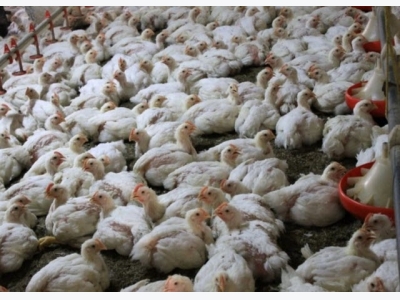Does beta-mannanase use really improve soybean feed for poultry?

© iStock/Shef-time
Beta-mannanase may not boost digestibility of soybean meal in poultry diets, say researchers.
A group of researchers with the University of Manitoba presented findings from a study examining the use of the enzyme beta-mannanase with feeds containing beta-galactomannans (b-mannans) from soybean meal at the 2016 Poultry Science Association annual meeting in July.
The group decided to evaluate the use of beta-mannanase supplements in soybean meal-based diets because the use is commonly recommended and the structure of the carbohydrate in that meal and the enzyme used to neutralize it did not appear to negate each other, said corresponding researcher Anna Rogiewicz, research associate at the university.
She worked with Bogdan Slominski, professor in the department of animal science, on the project.
Producers want to reduce the amount of mannan because there have been concerns that it creates a “feed induced immune response” in poultry, which causes the animal to waste energy, said Rogiewicz.
However, soybean meal does not have the same amount of beta-mannan in it, said Rogiewicz, who said in vitro studies done by the team confirmed that fact.
The structure of the b-mannans in soybean meal appears to be different to that of the b-mannans found in feeds like palm kernel, copra meal and guar meal, where the enzyme is more effective, she said.
The team found that using the enzyme did not alter the growth of birds nor it negate the low-level of b-mannan from the soybean meal in the poultry feed.
However, the enzyme treatment is much more effective when used with alternative feeds like kernel meal and copra meal that have greater levels of mannan, said Rogiewicz.
The trials
In the first experiment, the research team mixed soybean meal with commercially available beta-mannanase additives, said Rogiewicz. The idea was that since so little beta-mannan was present in the feed ingredient maybe using the enzyme would eliminate it entirely.
The second study looked at bird growth and development of 300 birds when they received a feed with supplemental beta-mannanase or without, she said.
That study involved the use of a soybean meal based diet along with a positive and negative control diet, testing three commercial beta-mannanases and one multiple enzyme preparation.
Birds were fed for 21 days and blood samples were checked for immunoglobulin levels of IgG, IgM and IgA, said the researchers. At the conclusion of the study birds were harvested so relative organ weight and the duodenum, jejunum and ileum could be analyzed.
“If the immune organs are enlarged then we can assume there was stimulation,” said Rogiewicz.
Results
For the in-vitro trials, the group found that using the enzyme on soybean meal did not reduce the amount of b-mannan present, said Rogiewicz.
“We produced water soluble mannan from the soybean meal – but it didn’t work even on that,” she said. “So our in vitro studies showed that it wasn’t as effective on soybean mannan.”
The second trial did not find any significant differences in the birds getting any of the trial diets, she said. There was a slight boost in growth performance for the birds getting the blend of enzymes in their feed, but it was not statistically significant.
Birds had similar results for body weight gain, feed intake and feed conversion ratio, said the researchers. The immunoglobulin levels in serum and the small intestine of the chickens was also similar and organ weights tended to be the same.
“Technically mannanase is not effective,” said Rogiewicz of use with soybean meal. “They are recommended, but they didn’t really reduce the mannan in the diet.”
Canadian Bio-Systems helped fund the research project.
Related news
 Protect profits through supplementation of HMTBa
Protect profits through supplementation of HMTBa Recent data has shown broilers supplemented with HMTBa (2-hydroxy 4-(methylthio) butanoic acid) as a methionine source exhibited fewer condemnations and higher
 Protease’s role in alleviating necrotic enteritis losses
Protease’s role in alleviating necrotic enteritis losses Necrotic enteritis has been estimated to affect up to 40% of commercial broiler flocks and is believed to cost the industry roughly $0.05 per broiler in the US
 Preparing for the next flu season
Preparing for the next flu season With the knowledge that it is always flu season somewhere, the large poultry production regions in the western hemisphere are preparing for the next flu season